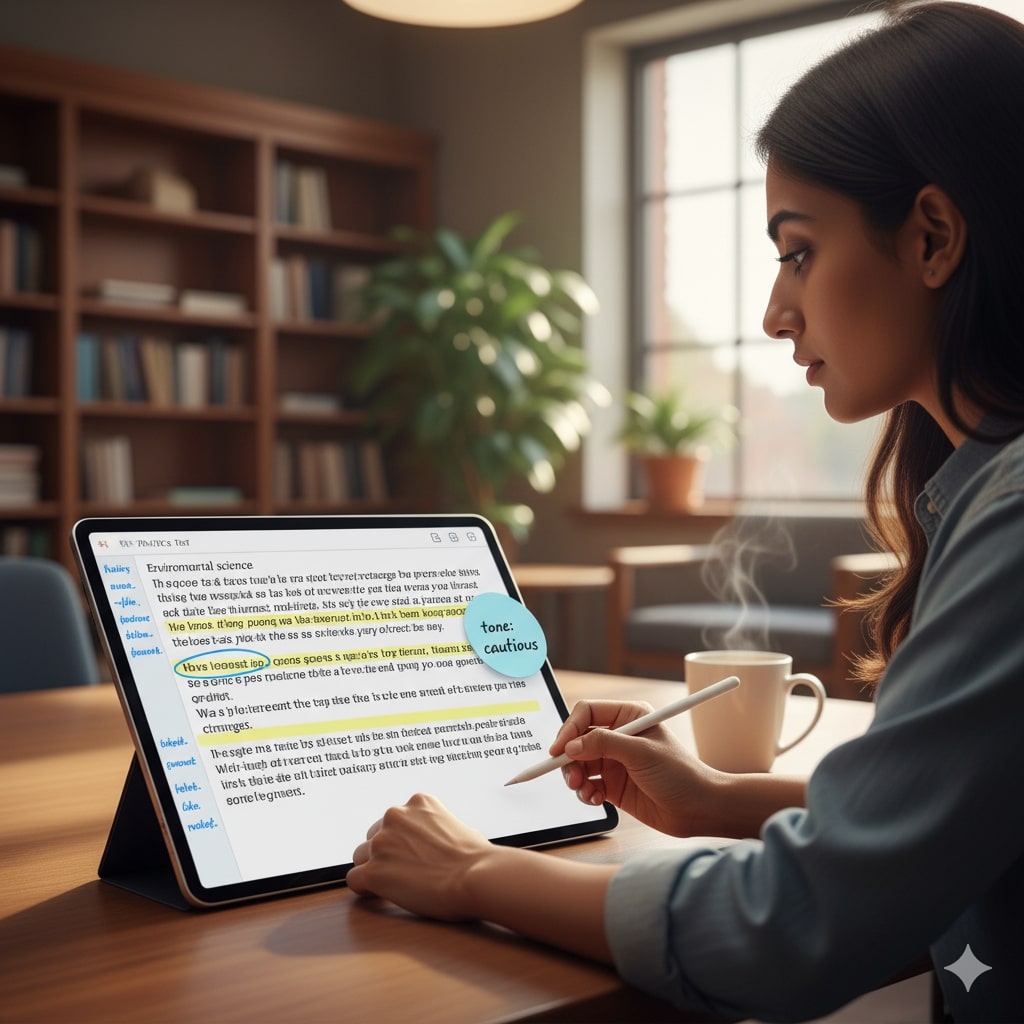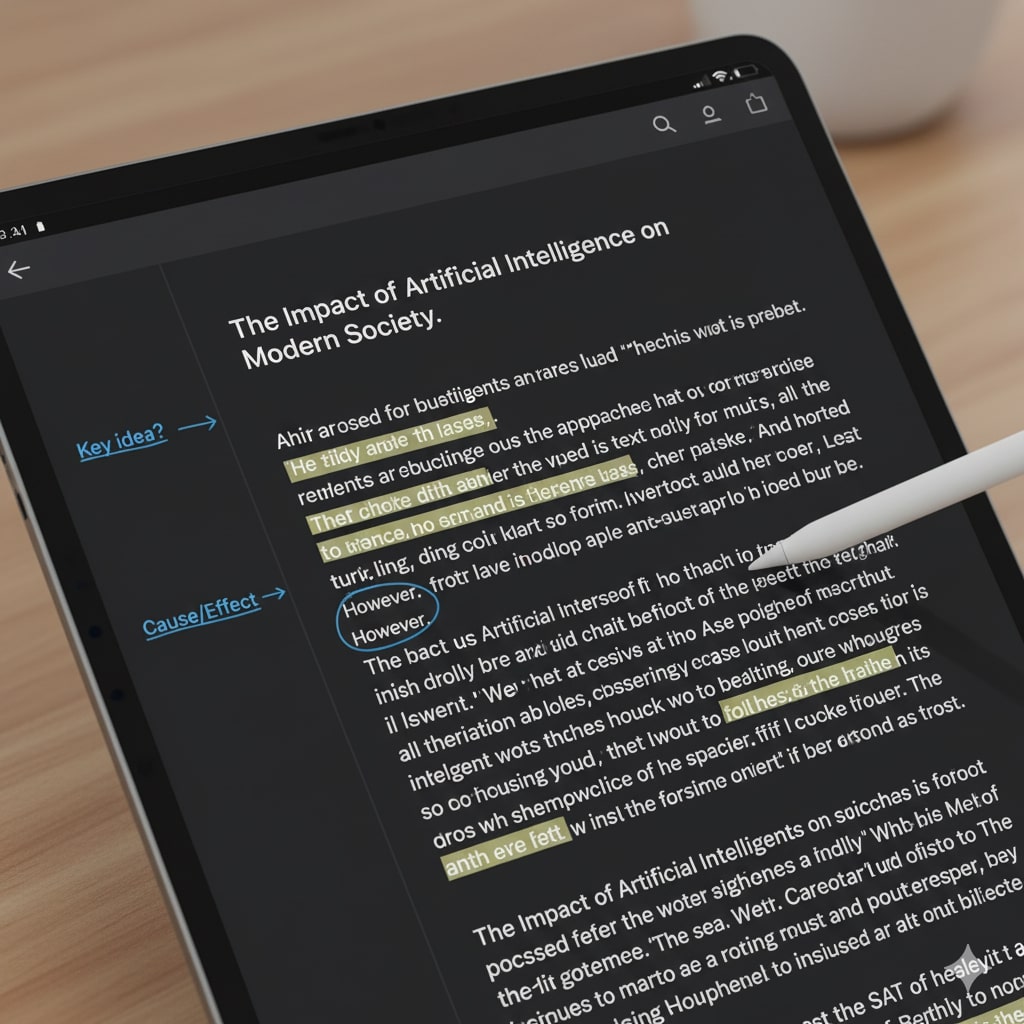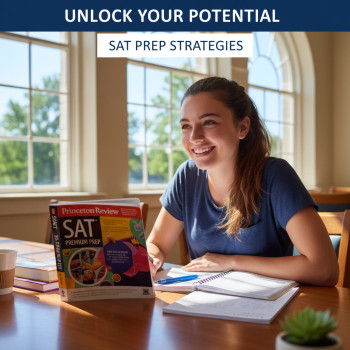Why Annotation Matters More Now Than Ever for the Digital SAT
If you’ve spent any time with the Digital SAT, you’ve probably noticed it feels different from paper tests: passages are presented on a screen, question navigation can feel more dynamic, and tools like highlighting and strikethroughs live inside the test software. That’s why annotation isn’t some antiquated habit from your high school English class — it’s a strategic skill that can give you clarity, speed, and confidence on test day.
Annotation turns passive reading into active thinking. Instead of letting a dense passage wash over you, you create a map — a few marks, a short note, a bracketed sentence — that lets your brain return to the passage quickly and accurately. For the Digital SAT, where time and clarity are premium, effective annotation is often the difference between hunting for answers and finding them in seconds.
What Good Annotation Looks Like on the Digital SAT
There’s no single “right” way to annotate; what matters is clarity and consistency. Good annotation accomplishes three things:
- It captures the passage’s main idea and structure.
- It marks the author’s tone, argument moves, and evidence.
- It creates quick navigation cues so you can jump back to the exact sentence you need.
Below are practical annotation marks and what they mean in real testing situations.
Essential Annotation Symbols and Their Uses
- Underline the thesis or claim: A single underline for the main idea helps when a question asks “What is the primary purpose?” or “Main idea.”
- Bracket evidence: Use square brackets or a box for sentences that contain facts or data that support the main claim — very useful for evidence-based questions.
- Circle transition words: Words like “however,” “therefore,” or “moreover” signal shifts in reasoning; circling them helps you track the argument’s flow.
- Short margin notes: One-word notes like “cause,” “contrast,” “example,” or “tone: ironic” are faster and more effective than long paraphrases.
- Number the paragraphs: Small numbers in the margin (1, 2, 3) are a lifesaver when questions reference “the passage” and you need to cite paragraph 2 quickly.
- Strikethrough distracting digressions: If a sentence is interesting but irrelevant to the question types you expect, lightly strikethrough to signal lower priority.

How Annotation Improves Accuracy and Speed
Let’s break down why these small marks make a big difference.
- Reduces re-reading: Instead of re-scanning a paragraph to find the author’s claim, your underline or margin note points you right there.
- Clarifies question types: When you see an evidence-based question, your bracketed sentence helps you choose the strongest support quickly.
- Prevents trap answers: Many wrong choices twist a phrase or misidentify the author’s tone; if you’ve annotated tone and transition cues, those traps lose power.
- Boosts confidence: Annotations are visual checkpoints. When you can see the argument mapped before your eyes, stress drops and focus rises.
Example: From Passage to Answer in 45 Seconds
Imagine a 350-word passage about urban gardening. You read and annotate in one pass: number paragraphs, underline the thesis in paragraph 1, bracket a key statistic in paragraph 2, circle “but” in paragraph 3 (indicating contrast). A question asks, “Which choice best summarizes the author’s attitude toward municipal support for green roofs?” Because you circled several contrast markers and annotated the concluding sentence as “tone: cautious optimism,” you can answer in one look: the author is supportive but emphasizes limitations. No re-reading required.
Annotation Techniques Tailored to Digital Tools
Digital testing platforms (like the Bluebook app used for the Digital SAT) usually provide built-in tools: highlight, strikeout, and note boxes. The trick is to adapt classic paper techniques to these digital features.
Use the Platform Features Strategically
- Highlight sparingly: Color everything and your highlights lose meaning. Reserve highlights for the thesis and one or two key evidentiary sentences.
- Strikeout for distractions: Use strikeout when a sentence contains interesting but irrelevant detail; it signals “skip this unless needed.”
- Notes as quick tags: Use short note tags like “claim,” “data,” “tone” — don’t write full sentences. Many platforms let you jump from note to note; leverage that for fast navigation.
- Combine tools: Highlight the thesis and add a short note (‘claim’) to it — two cues are better than one.
Practice Tip: Mirror Test Conditions
When practicing, open official digital practice tests or simulate the Bluebook environment. If you get used to where the highlight button is or how long notes display, you’ll save precious seconds on test day. If possible, time your practice passages and track how often you re-read; aim to decrease re-reads by 30–50% over several weeks.
Common Annotation Pitfalls and How to Avoid Them
Annotation can backfire if it becomes noise instead of navigation. Here are the top mistakes students make and simple fixes.
Pitfall 1: Over-annotating
Why it hurts: Excessive marks slow you down and make the screen look cluttered. Fix: Use three-to-five meaningful marks per paragraph — a thesis underline, one evidence bracket, and one tone or transition marker.
Pitfall 2: Vague notes
Why it hurts: Notes like “important” don’t tell you why something is important. Fix: Be specific. Write “evidence” or “contrast” — one precise word beats a vague label.
Pitfall 3: Decorating instead of mapping
Why it hurts: Fancy arrows and doodles are satisfying but not helpful. Fix: Stick to functional symbols and keep your mental map consistent across passages.
How to Teach Yourself a High-Return Annotation System in 30 Minutes
Want a compact routine you can apply consistently? Try this short drill once a day for two weeks.
- Minute 0–5: Read the passage once straight through without marking, just to get a sense of voice and scope.
- Minute 5–15: Re-read and annotate using the following rule: one underline for the main claim, one bracket for key evidence, one circled transition per paragraph, and one short margin word for tone or purpose.
- Minute 15–20: Answer the questions, timing how long each takes and noting any re-reads.
- Minute 20–30: Review your annotations. Ask: Did they prevent re-reading? Which marks were most useful? Tweak for the next day.
A Simple Study Plan: Annotation + Practice = Improvement
Consistency beats intensity. Here’s a weekly plan designed to build annotation skill without burning you out. Adjust the daily time to fit your schedule.
| Day | Focus | Activity | Time |
|---|---|---|---|
| Monday | Technique | Practice annotation drill on 2 passages (timed) | 40–60 min |
| Wednesday | Speed | Timed set of 4 short passages; focus on reducing re-reads | 45 min |
| Friday | Accuracy | Work on evidence-based questions; annotate for support lines | 45–60 min |
| Sunday | Mock test | Full practice section in digital format; review annotations and time | 90–120 min |
Over four weeks this plan builds muscle memory. Many students find that after consistent practice, they spend 20–40% less time on each passage while answering as accurately or more accurately than before.
How Annotation Helps with Different Question Types
Not all Reading questions are created equal. Let’s look at how annotation helps with the most common types.
Main Idea and Purpose Questions
These often point to the thesis. If you’ve underlined the central claim, these questions become straightforward because you can compare answer choices to your marked sentence instead of interpreting the entire passage again.
Detail and Evidence Questions
Bracketed evidence lines shine here. When asked which line supports a claim, your bracket points directly to the strongest support and helps you eliminate choices that are irrelevant or only tangentially related.
Inference and Tone Questions
Circular or short margin notes about tone, attitude, or implication guide you to subtle cues: word choice, punctuation, or contrast markers that hint at the author’s stance. A quick scan for your tone tags often reveals the correct inference without a second read.
Real-World Context: Why Employers and Colleges Care About These Skills
Annotation isn’t just a test hack; it models an academic and workplace skill. Professionals skim reports, highlight key metrics, and jot margin notes to prepare briefings or make decisions. Learning to extract the heart of an argument efficiently mirrors the real-world literacy that colleges and employers value — which is why honing annotation helps beyond the SAT scoreboard.
When Personalized Help Makes a Big Difference
Some students pick up annotation techniques quickly on their own. Others benefit from guided feedback: a tutor can watch your marks, notice patterns (like re-reading certain phrases), and suggest targeted adjustments. That’s where tailored tutoring — such as Sparkl’s personalized 1-on-1 guidance — can accelerate progress. With an experienced tutor you’ll get:
- Customized annotation routines based on your reading style.
- Targeted practice passages that address your weak spots (tone, evidence, inference).
- Regular review and data-driven adjustments using AI-driven insights so your practice time is maximally efficient.
Personalized coaching blends technique, accountability, and small, high-impact adjustments that add up quickly.
Tracking Progress: Simple Metrics That Tell You You’re Improving
Beyond raw scores, track these measurable signs of improvement:
- Average time per passage drops without losing accuracy.
- Number of re-reads per question decreases.
- Percentage of evidence-based questions answered correctly increases.
- Confidence rating per passage (subjective) rises — you feel calmer and more in control.
Record these metrics weekly. If a tutor or program (including Sparkl’s tutors) can show you progress on these indicators, you’ll have concrete proof that your annotation habits are working.
Sample Mini-Workshop: 60 Minutes to Sharper Annotation
If you’re short on time but serious about improvement, try this focused session.
- (10 min) Quick review: recall your annotation symbols and why each matters.
- (20 min) Hands-on: annotate two medium-length passages in digital format using only 5 marks per paragraph max.
- (10 min) Drill: answer 6 questions that rely on evidence and tone; time yourself strictly.
- (10 min) Review: compare correct vs. incorrect answers and see which annotations would have helped.
- (10 min) Adjust: tweak your symbols and write a one-sentence plan for your next practice session.
Final Tips: Small Habits That Create Big Gains
- Keep your system minimal. A half-dozen consistent marks will beat a thousand inconsistent ones.
- Practice in the exact digital environment when possible so tool ergonomics don’t surprise you on test day.
- Review annotations after practice: annotations that don’t help should be retired.
- Mix difficulty levels; annotate both short narratives and dense expository passages to build versatility.
- Consider periodic sessions with a tutor who can give objective feedback and structured practice — a few sessions with personalized guidance can often yield faster improvements than weeks of unguided practice.
Parting Thought: Annotation Is Less About Penmanship and More About Strategy
When you approach the Digital SAT Reading section, think of annotation as building a mental GPS for each passage: simple, precise markers that show where the key claims, evidence, and tonal cues live. The marks themselves aren’t the goal — they’re the scaffolding that helps you read smarter, not just faster.
Make your annotations intentional, practice them in the digital test environment, and keep the system lean. Pair this habit with a study plan and occasional personalized coaching — such as Sparkl’s tailored 1-on-1 tutoring and AI-driven insights — and you’ll see the difference not just in your score, but in how you read and think under pressure.
Ready to Start?
Pick one passage today, use the 30-minute annotation drill, and measure how many times you re-read. Small, steady improvements add up faster than marathon study days. Annotation turns the Digital SAT Reading section from a blur of words into a manageable, strategic puzzle — one you can solve, one passage at a time.
Good luck, and remember: practice with purpose, keep annotations simple, and don’t hesitate to seek personalized feedback when you’re stuck — that nudge often makes the difference between incremental gains and a breakthrough.















No Comments
Leave a comment Cancel